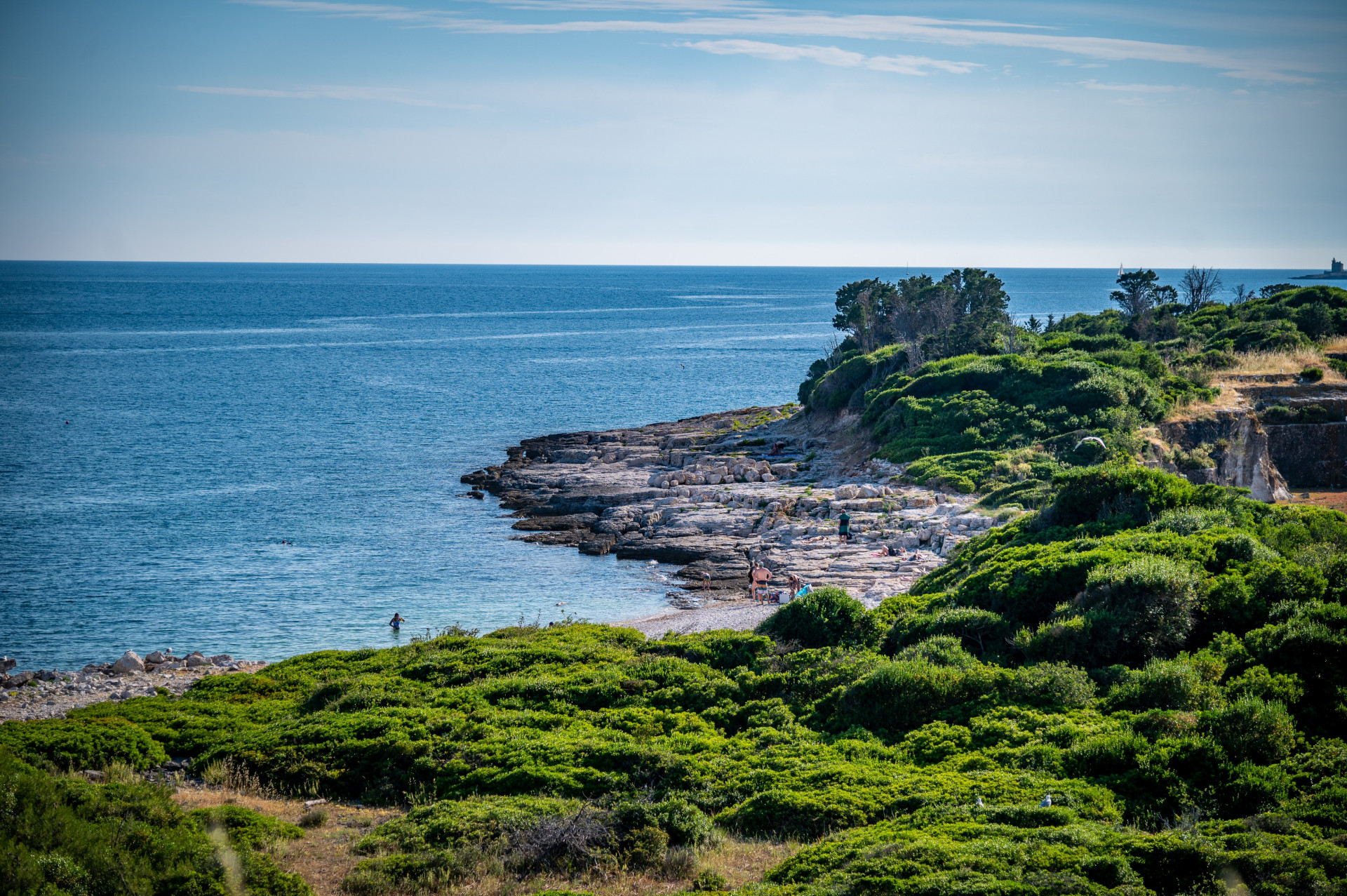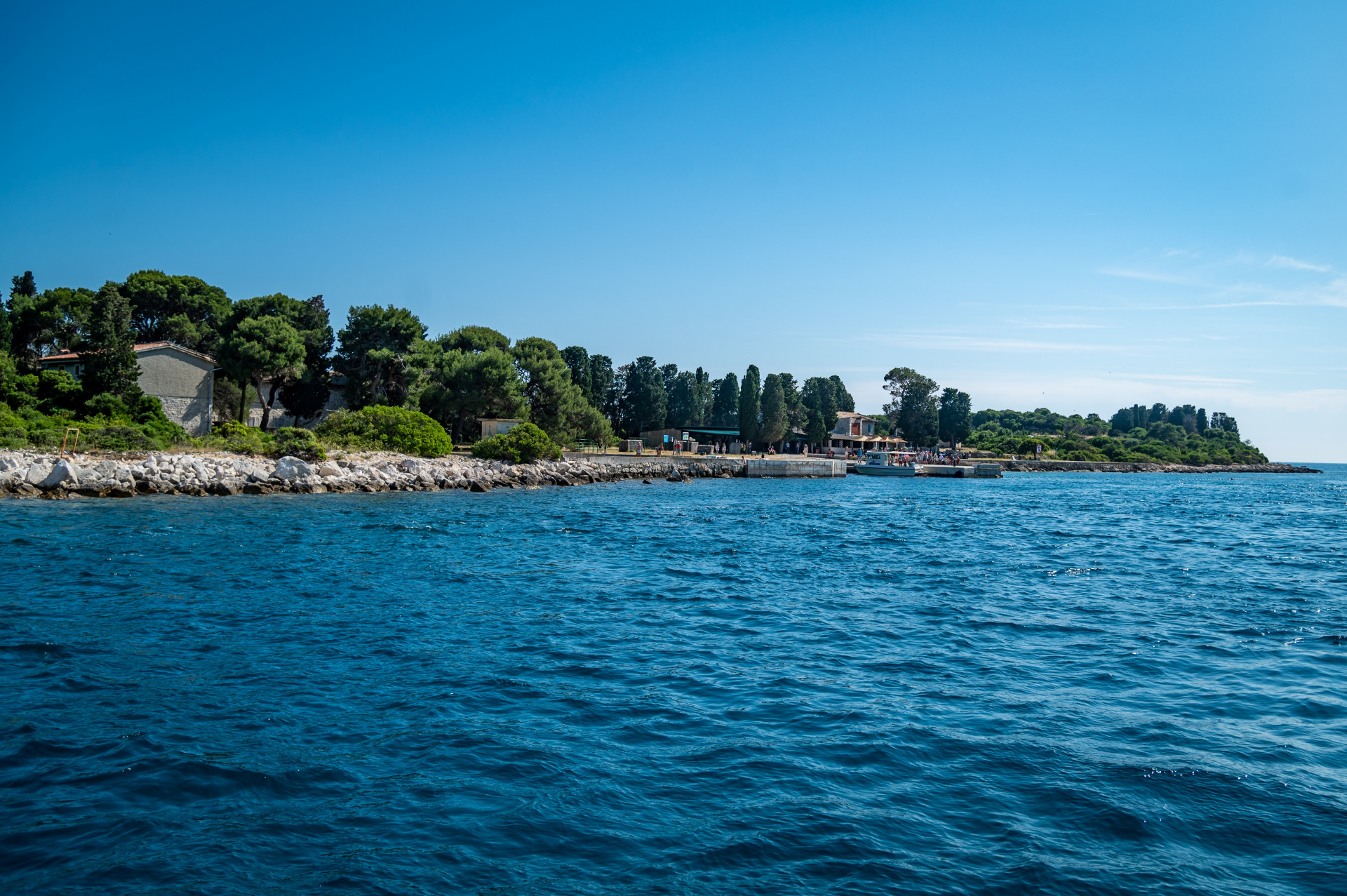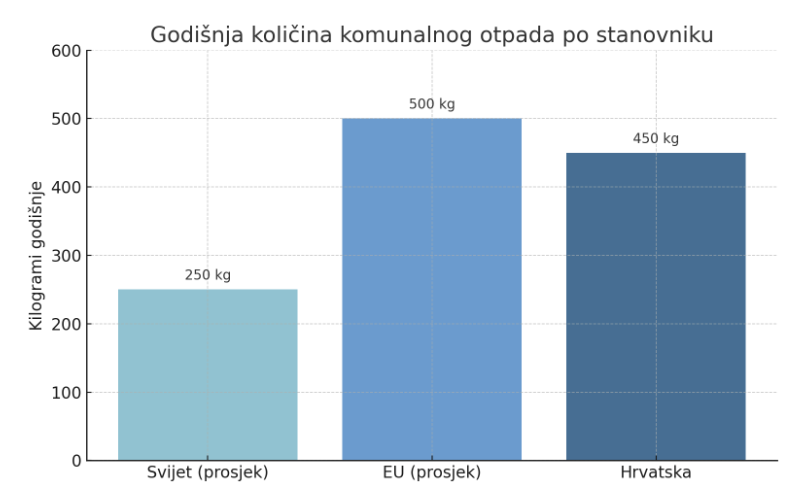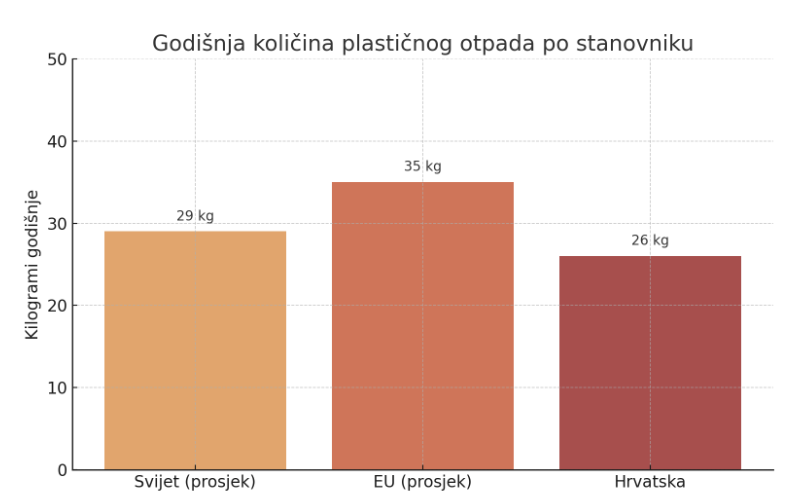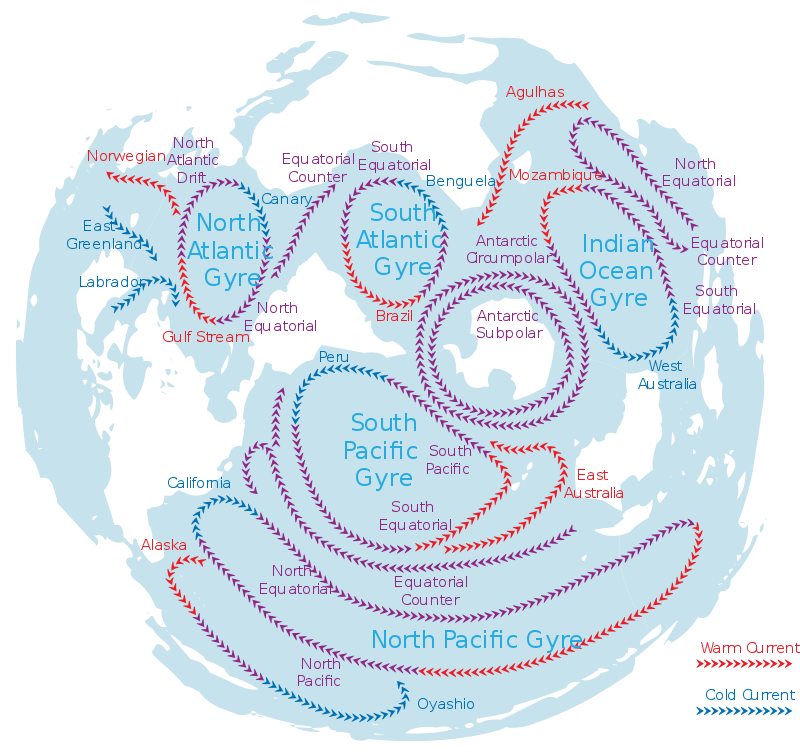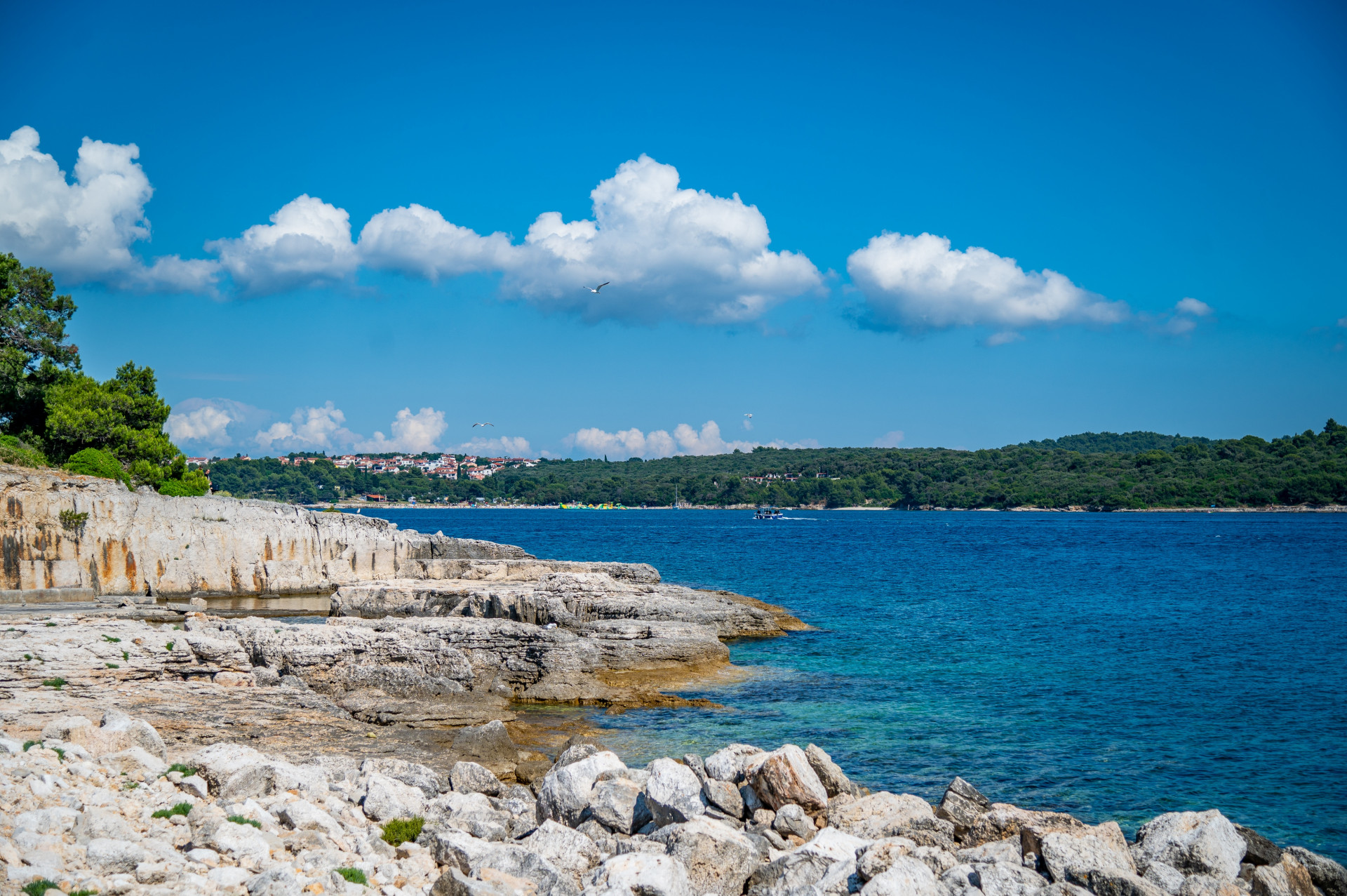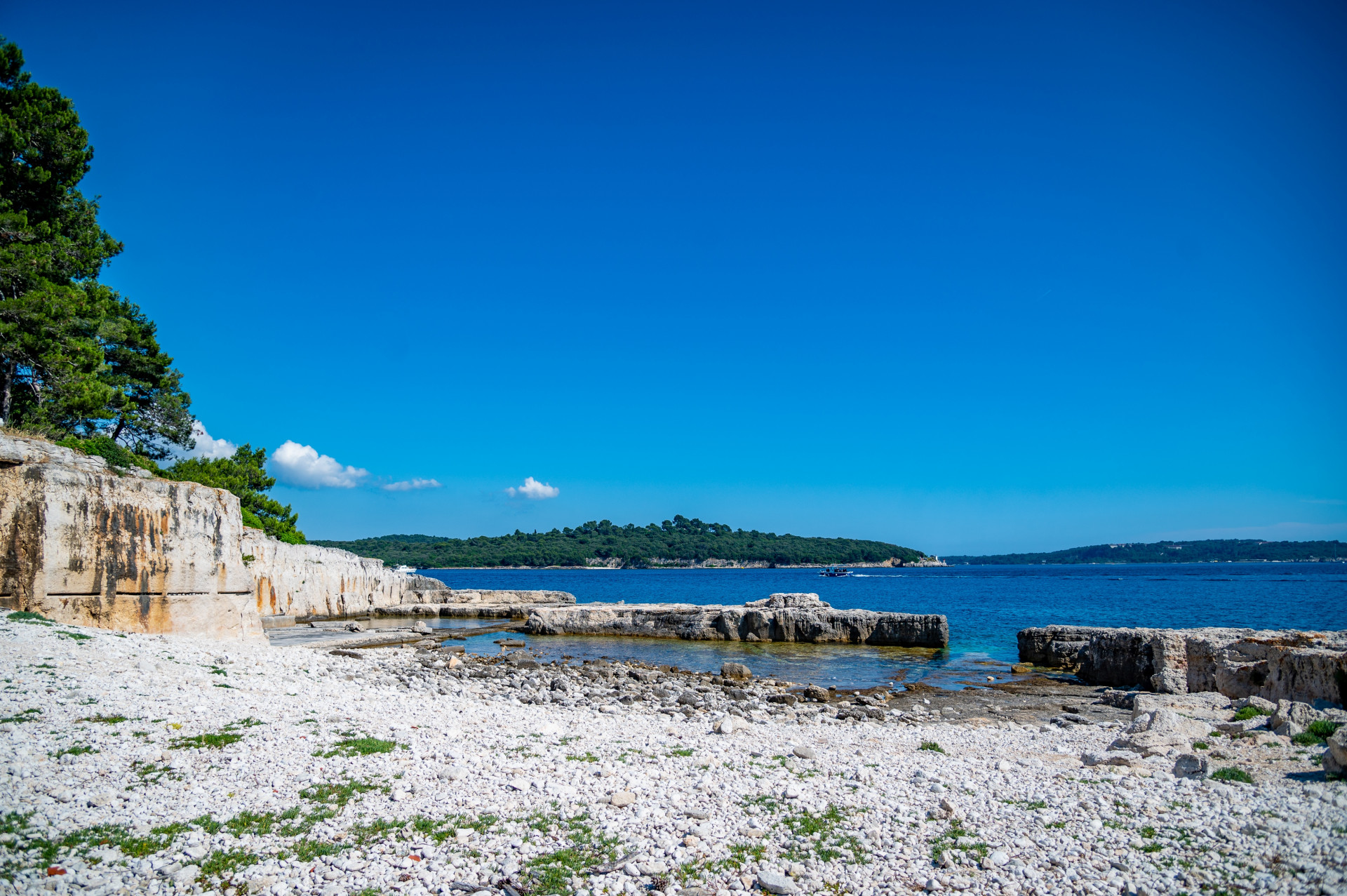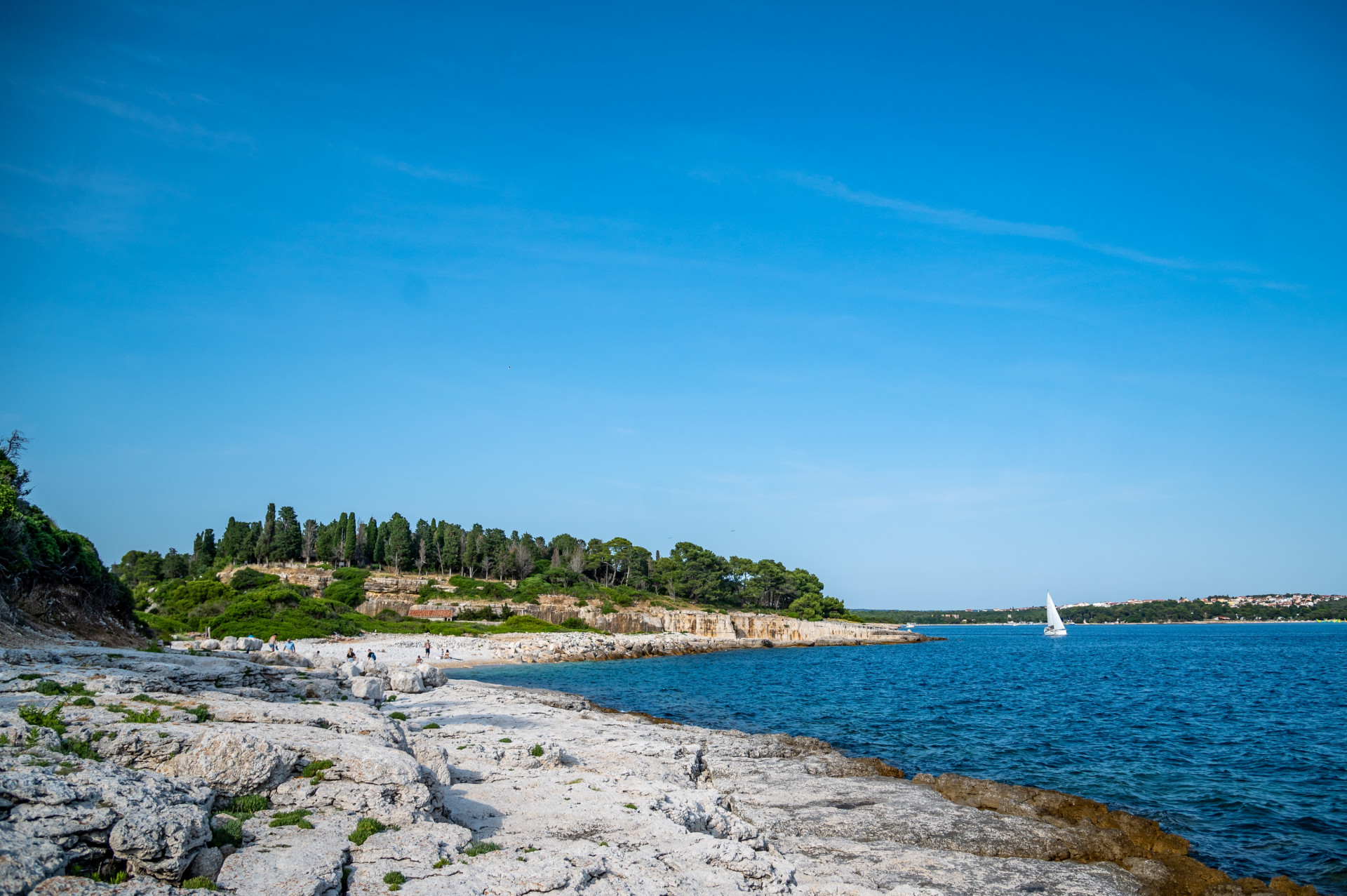Saint Jerolim Island is one of the 14 islands and islets that make up Brijuni National Park. It covers 7.84 hectares and lies just 750 m off the coast. The island is a popular day‑trip spot and bathing area for residents of Pula and nearby towns. Individual and group visits are possible, with full‑day stays and swimming allowed. Its rich underwater world also makes Saint Jerolim a popular diving destination.
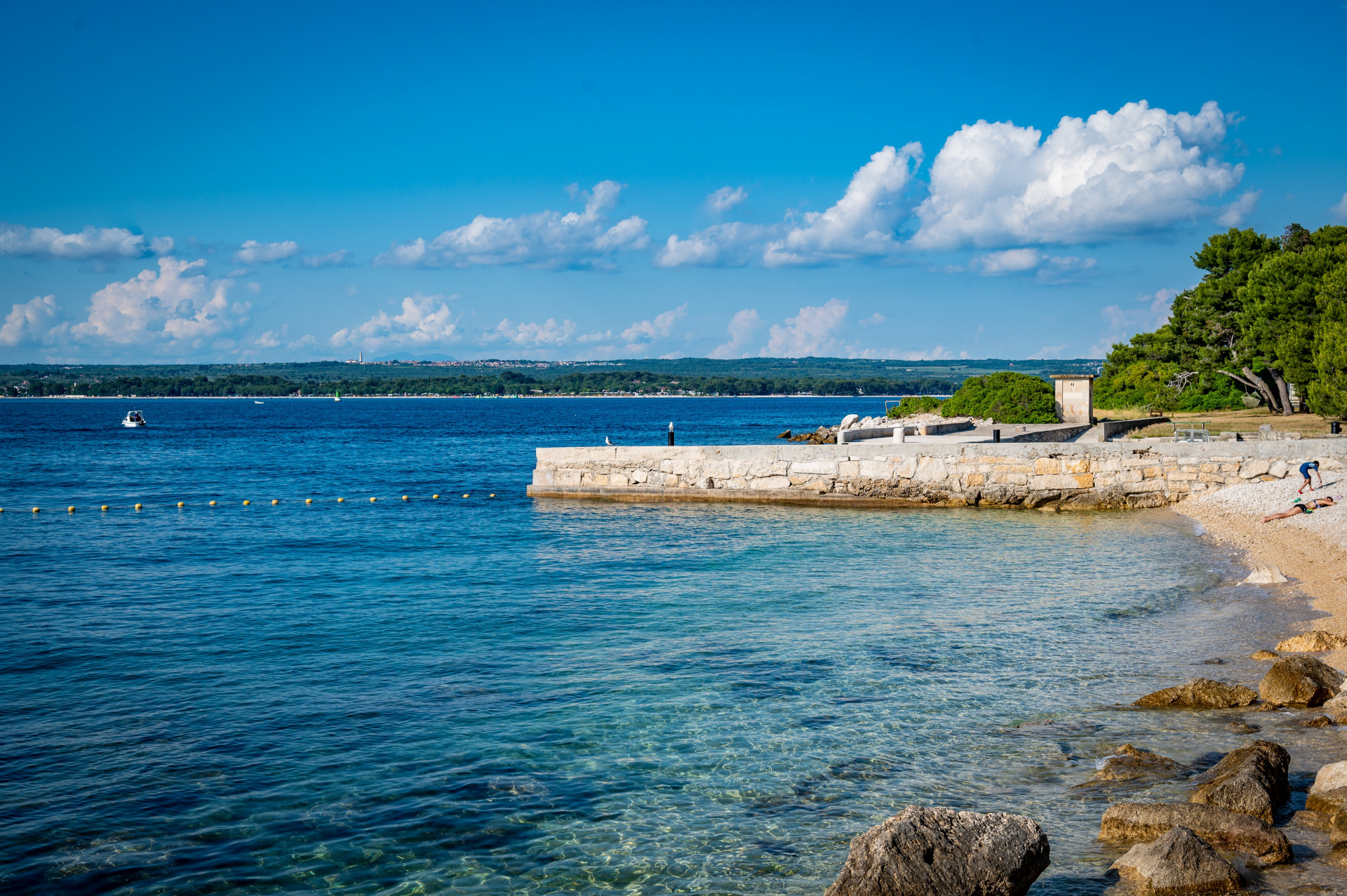
Saint Jerolim Island
Starting this year, Jerolim becomes an island free of plastic and waste—because Superheroes take their trash with them!
A sculpture by Pula sculptor Marko Človek, representing the Brijuni National Park logo, will be installed near the pier. This also serves as a drop‑off point for single‑use plastic bottles visitors no longer need after their trip. Waste‑separation bins are being removed from the island—instead, upon purchasing their ticket, visitors receive a trash bag and instructions, encouraging them to take their waste home.
The greatest threat to our planet is thinking someone else will take care of our surplus.
Waste
In our local community, different types of waste are generated every day – from household and plastic to bulky and electronic. By properly sorting and disposing of waste, we all contribute to a cleaner environment, a healthier life and the preservation of natural resources for future generations. Waste is any material that ceases to have its original purpose and is no longer used, and is generated in households, industry and service sectors and in everyday life. Depending on its composition and origin, waste is divided into different types such as municipal, hazardous, electronic, biowaste and the more familiar paper, plastic, glass.
(Charts: Annual amount of municipal waste and plastic waste per capita: global average, European Union and Croatian average)
Over 2 billion tons of municipal waste are produced worldwide annually, and according to estimates, this figure could increase to as much as 3.4 billion tons by 2050 if the way we produce and consume does not change. According to Eurostat from 2023, in the European Union, the average citizen produces about 500 kilograms of waste per year, while in Croatia this number is slightly lower – about 450 kilograms per capita (Environmental Protection and Energy Efficiency Fund, 2023).
Plastic
Mass production of plastic waste began in the 1950s. Its popularity is due to its extremely wide application and low cost of production and processing. After using paper for a long time and bringing with it the problem of deforestation and excessive use of natural resources as a result of uncontrolled use of resources, man found his comfort in plastic. The forests have taken a breather, but what has happened in the meantime?!
Plastic has taken over the monopoly: packaging - bottles, containers, foil, bags, nets; textile clothing, footwear, upholstery; cosmetics - scrubs, creams.. It was originally designed as a long-lasting material, but today it is actually mostly disposable, which has led us to the current challenges.
According to OECD data, the annual amount of plastic waste per capita varies, for example, in the United States it is 221 kg, while in European OECD countries the average is 114 kg. According to the European Parliament, in 2021, the average EU resident generated 36.1 kg of plastic packaging waste. According to the Plastic Smart Cities initiative, Croatia generates around 96 kg of plastic waste per capita annually.
Europe ranks second in the world in plastic production, according to the latest research, as much as 70 to 80% of the waste produced ends up in the marine environment and it is estimated that as much as 300 million tons of plastic waste floats in the world's seas.
(Photo source: https://www.oceansplasticleanup.com/Gyres_Oceans_Plastics_Marine/Pacific_North_Gyres_Oceans_Marine_Plastic_Cleanup_Projects.htm)
There are 5 eddies of plastic in the sea, the largest is 3 times bigger than France!
Rivers are one of the main sources of bringing plastic material from the land to the sea, which is then moved by sea currents. The action of some of the largest ocean currents in the world has created 5 circulation systems that look like slow-motion water eddies: the most famous are the North and South Pacific eddies, but there are also the North and South Atlantic eddies and the Indian Ocean eddies. Within these large bodies of water, the movement of currents collected an incredible amount of waste. The largest gyre of debris is the North Pacific gyre, which is estimated to contain between 80,000 and 100,000 tons of trash.
Recycling is known to be a controversial way to reduce plastic waste, as it is inefficient and actually pollutes the environment.
The recycling rate of plastic is very low because not all plastic is the same! Plastic materials are divided into polyester (PET), polyethylene (PE), polyvinyl chloride (PVC), polypropylene (PP), polystyrene (PS), nylon (PA), cellulose acetate (CA) and other (OTHER) according to their composition. Each material is used for different applications and has a different specific density that depends on the composition of the particles and a different time and method of decomposition, as well as the method of recycling.
Plastic materials bind toxic compounds from the environment and can be a carrier of alien and invasive species and remain in animals!
Depending on its density, plastic remains on the surface of the sea, in the water column or settles on the seabed. Marine organisms often mistake it for food, so it often happens that sea turtles replace jellyfish with plastic bags. Clams, mussels and other organisms filter the mud and water and eat plastic micro and nano particles. Fish and seabirds replace food with plastic, and thus die of hunger or suffocation, and often this plastic ends up on our plates.
Waste on Brijuni Islands
In Brijuni National Park, waste is separated and properly disposed of. On the island of Veliki Brijun, 2 recycling yards and a special section for logs and wood waste have been established.
Waste from beaches is regularly removed, separated and disposed of, and several times a year we organize ecological actions to clean up the land and underwater.
In 2021, in collaboration with scientists from the Ruđer Bošković Institute, waste found in the Brijuni National Park (on the seabed and in the water column) and on the beaches of larger islands was analyzed. The research was conducted as part of the Interreg Med project Plastic Busters MPAs.
According to data from the beaches, a total of 12,648 items were analyzed during the research, weighing a total of 382 kg. It was calculated that, on average, on Brijuni we find about 3 items per square meter of beach, which is similar to the average calculated for Croatian beaches. Most of the waste could not be identified (around 50%) to determine its origin, while the rest was proven to come from sewage (8%), the fisheries and aquaculture sector (19%), and tourism activities (19%).
According to the data on waste retained in the water column, a total of 12 km of water area was analyzed during the research. It was calculated that, on average, on Brijuni we find about 80 items per square meter of water column. The majority, or 78% of the analyzed waste was plastic waste.
Data on waste collected on the seabed were collected by divers who searched the seabed from 0 to 20 m depth. It was calculated that, on average, on Brijuni we find about 8 items per 100 square meters of seabed. The most commonly found material category was glass (> 50%), however, large quantities of plastic and metal (> 15%) were also found. Most of the waste could not be identified (about 74%) in order to recognize its origin. It was proven that 18% of the waste comes from tourism activities and 5% from the fisheries and aquaculture sector.
Green transition
The green transition of islands refers to the process of switching from fossil fuels to sustainable and renewable energy sources, improving waste management, promoting the zero waste movement and green public procurement with the aim of protecting the environment and nature. This process includes a series of measures and policies that enable the transition to more environmentally friendly, sustainable and energy-efficient practices, while reducing negative impacts on the environment.
Islands are particularly valuable and vulnerable to environmental changes, and it is especially important to work on a green transition when islands are also valuable natural and historical reservoirs such as the Brijuni National Park. Islands can be pioneers of sustainable development and inspiration for larger communities.
On Brijuni, the green transition in the context of waste management includes strategies for waste reduction, recycling, composting and using waste as a resource. On islands, where waste management is often challenging due to limited resources and space, it is important to apply a zero waste approach. Green Public Procurement (GPP) refers to the procurement of products and services that are environmentally friendly, energy efficient and produced with minimal negative environmental impact. Sustainable agriculture involves the application of methods that reduce chemicals, protect soil and water, and sustainable tourism reduces the negative environmental impacts of mass tourism, using eco-friendly accommodation, reducing energy and water consumption and promoting local products.
The wish is for Brijuni National Park to become an example and role model in environmental protection. Brijuni National Park aspires to become an ecologically sustainable destination.
 Parks of Croatia
Parks of Croatia
 EU projects
EU projects English
English
